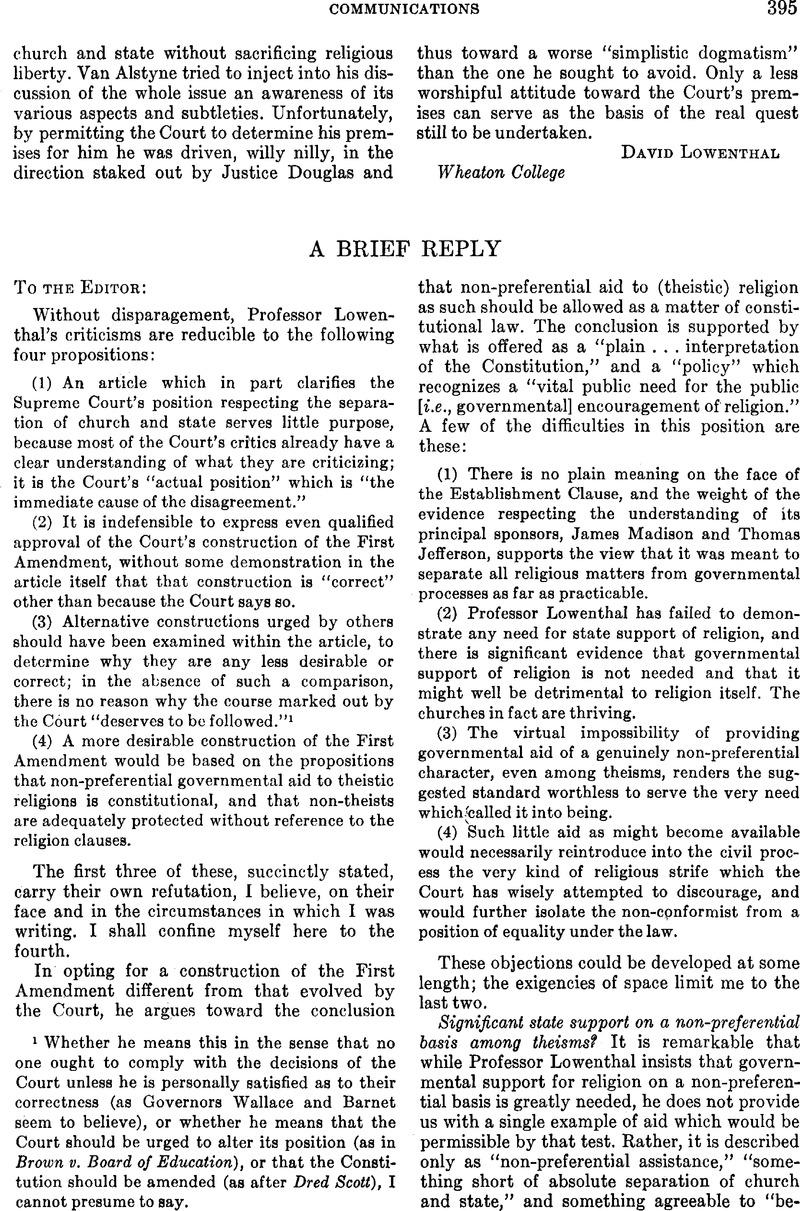No CrossRef data available.
Article contents
A Brief Reply
Published online by Cambridge University Press: 02 September 2013
Abstract

- Type
- Communications
- Information
- Copyright
- Copyright © American Political Science Association 1964
References
1 Whether he means this in the sense that no one ought to comply with the decisions of the Court unless he is personally satisfied as to their correctness (as Governors Wallace and Barnet seem to believe), or whether he means that the Court should be urged to alter its position (as in Brown v. Board of Education), or that the Constitution should be amended (as after Dred Scott), I cannot presume to say.
2 Brant, , James Madison, The Nationalist (New York, 1948), pp. 344–45Google Scholar.
3 Reproduced in Engel v. Vitale, 370 U.S. 421, 422 (1962).
4 Tillich, , “The Sum and Substance,” University of Southern California Alumni Review, Vol. 44 (1963), 11, 13Google Scholar.
5 See United States v. Ballard, 322 U.S. 78 (1944).
6 United States v. Seeger, 326 F. 2d 846 (2d Cir. 1964). Earlier quotations in the text are taken from the case report which warrants a complete reading. For an admirable discussion of “religion” in a slightly different context, see Fellowship of Humanity v. Alameda, 153 Cal. App. 2d 673, 315 P.2d 394 (1957).





Comments
No Comments have been published for this article.